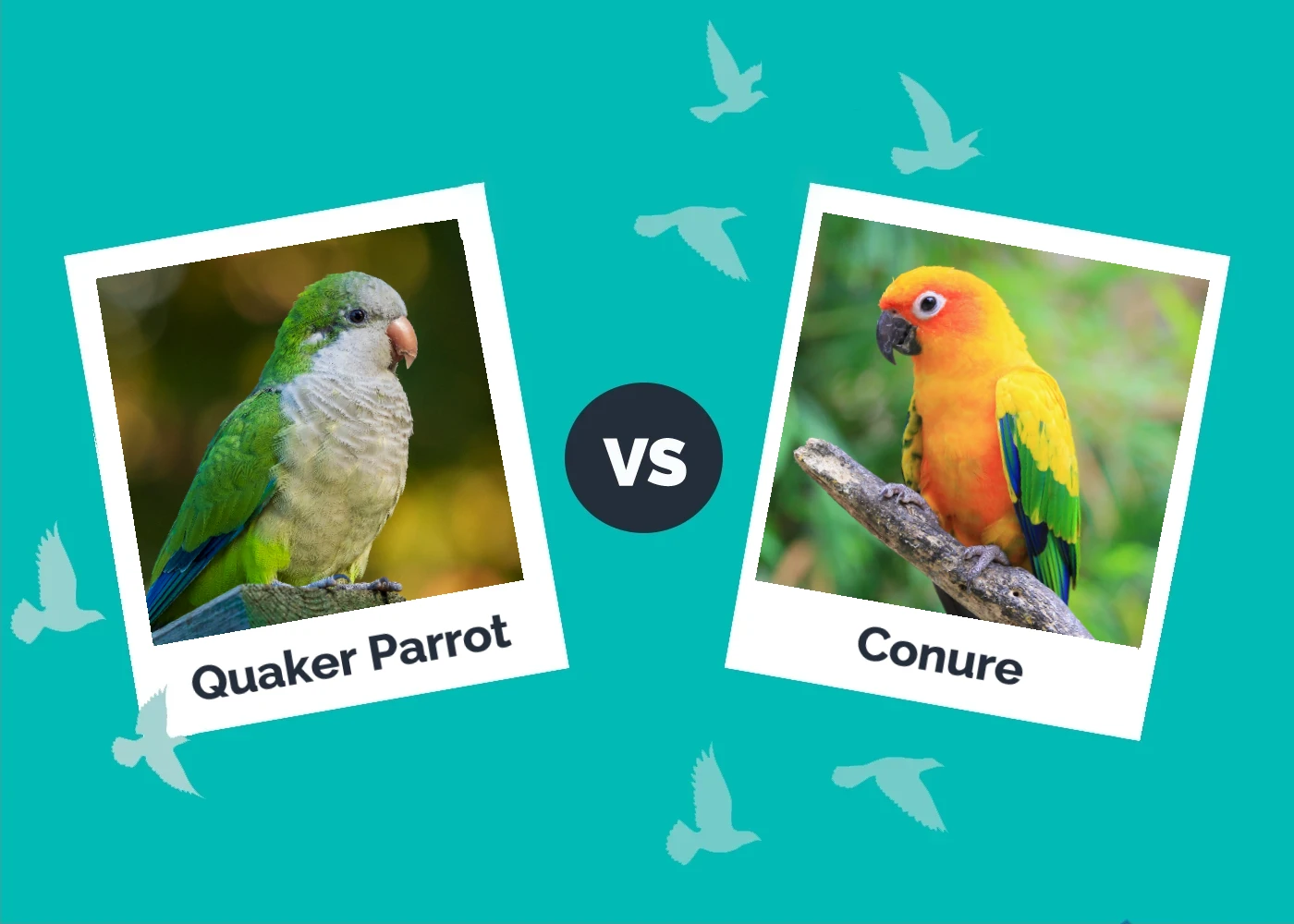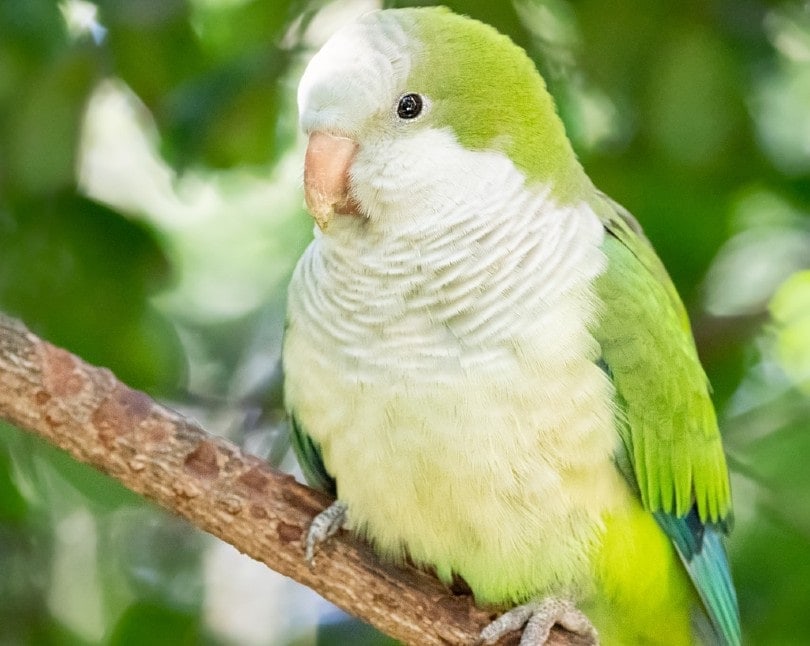7 Red & Orange Pet Bird Species You Can Bring Home (With Info & Pictures)
Updated on
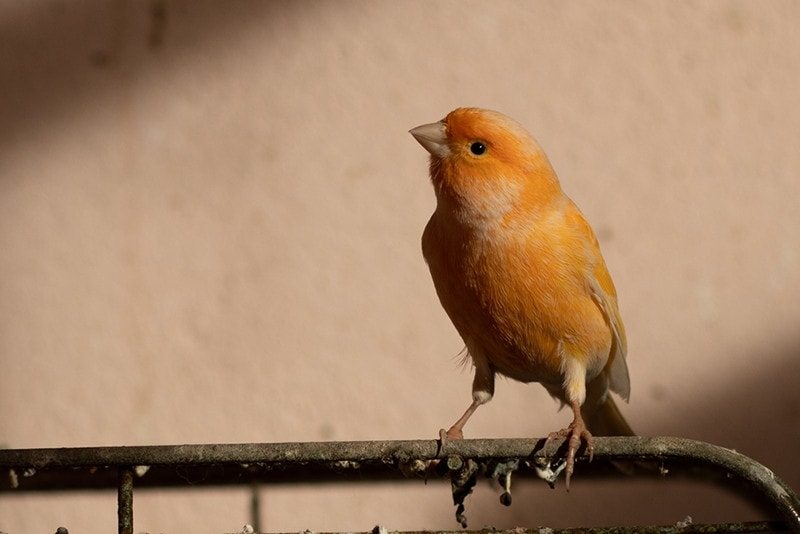
When choosing a bird as a pet, you want one that is colorful, friendly, and easy to care for. If you love the idea of owning a red and orange pet bird, there are a few options, though not as many as you would think.
We’ll give you our top picks for the best red and orange pet bird species you can bring home as a pet today in the guide below. However, it’s also important to remember that birds are not pets you can put in a cage, feed, and forget.
These birds become attached to their owners, and many of them are very social, so make sure you’re up to the task before giving one a forever home.
The 7 Red & Orange Pet Bird Species
1. Rainbow Lorikeet

| Size | 15 inches |
| Weight | 2.5 to 5.5 ounces |
| Lifespan | Up to 30 years |
The Rainbow Lorikeet is one of the most colorful birds in the bird kingdom. They have bright red beaks, deep blue plumage, and bright red breasts with orange and bright yellow highlights on the sides. These excellent companion birds reach 15 inches long and weigh between 2.5 and 5.5 ounces when fully grown.
With a life expectancy of up to 30 years, the Rainbow Lorikeet would make anyone a fantastic pet for years to come. They have sweet temperaments, are known for being comical, and have very friendly personalities. The bird is easily socialized and loves interacting with its owner.
You’ll need plenty of free time to spend with your Rainbow Lorikeet because they enjoy being social and aren’t shy about letting you know it. Feed your Rainbow Lorikeet a healthy combination of fresh fruits, green vegetables, nectar, and edible organic flowers for the best results.
These birds are not suited for apartment living as they can be quite loud and territorial, and they might not get along with other birds.
2. Fischer’s Lovebird

| Size | 5 to 6 inches |
| Weight | 1.7 ounces |
| Lifespan | 10 to 15 years or more |
The Fischer’s Lovebird is a small bird that weighs 1.7 ounces and reaches between 5 and 6 inches in length. This has earned the bird the nickname “the Pocket Parrott.” The species has a life expectancy of 10 to 15 years but can live much longer if cared for properly. The Fischer’s Lovebird has an orange face, orange breasts, and a reddish-orange beak.
However, they are considered the more aggressive birds of the Lovebird species, so you’ll want to be careful if you have other birds or small children around. These birds are curious, feisty, playful, and have full personalities. They are social birds that tend to form strong bonds with their owners, which means they are cuddly and often want attention.
Pellets, grasses, fruits, seeds, and veggies will comprise a complete diet for your Fischer’s Lovebird. Make sure to spend plenty of time with your feathered friend, and you’ll do well together.
3. Sun Conure
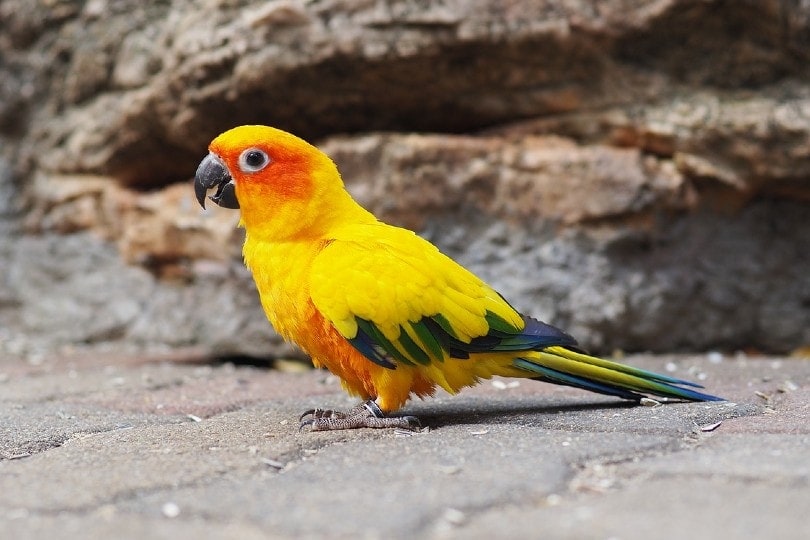
| Size | 12 inches |
| Weight | 3.5 to 4.3 ounces |
| Lifespan | 15 to 30 years in captivity |
The Sun Conure has been a popular pet for a long time now, and it’s no wonder that the bird is gorgeously colorful, friendly, and full of personality. You can expect your Sun Conure to reach 12 inches in length and top out at between 3.5 to 4.3 ounces in weight.
This species lives between 15 and 30 years in captivity if it’s taken care of properly. The Sun Conure is an intelligent pet that is easy to train and works well in a family setting, and they become even more breathtaking as they mature.
It is important to note that the species can become aggressive if provoked but is normally gentle, playful, and extremely curious about the world around it.
Like all Parrots, the Sun Conure becomes attached to its owners and needs plenty of socialization to be healthy and happy. Feed your bird a diet of fruits, nuts, seeds, and pellets to keep it healthy.
While it is an intelligent, friendly bird, it can become nippy with children and isn’t suited for apartment living or a place where you have close neighbors, as they can be pretty noisy. They are also not well-known for talking a lot, if at all, so if you’re looking for a talking Parrot, this might not be your best choice.
4. Dusky Lorikeet

| Size | 9.5 inches |
| Weight | 1.05 to 10.5 ounces |
| Lifespan | 28 to 32 years |
The Dusky Lorikeet, or the Dusky Lory, is a much bigger bird than others on our list. It grows to be around 9.5 inches in length and weighs between 1.05 to 10.5 ounces when fully grown.
It has a lifespan expectancy of 28 to 32 years, so make sure you’re up for taking care of this bird before giving it a forever home. The Dusky Lory has stunning colors and makes a great pet. They are friendly, intelligent, and have playful attitudes.
It’s best not to keep two Dusky Lorikeets in the same cage or aviary, however, as they could fight over the territory. The bulk of your bird’s diet should consist of store-bought nectar, but they also enjoy pollen, fruits, and seeds on occasion. The Dusky Lorikeet is a noisy bird, so it might not be suited for apartment living.
5. Jenday Conure
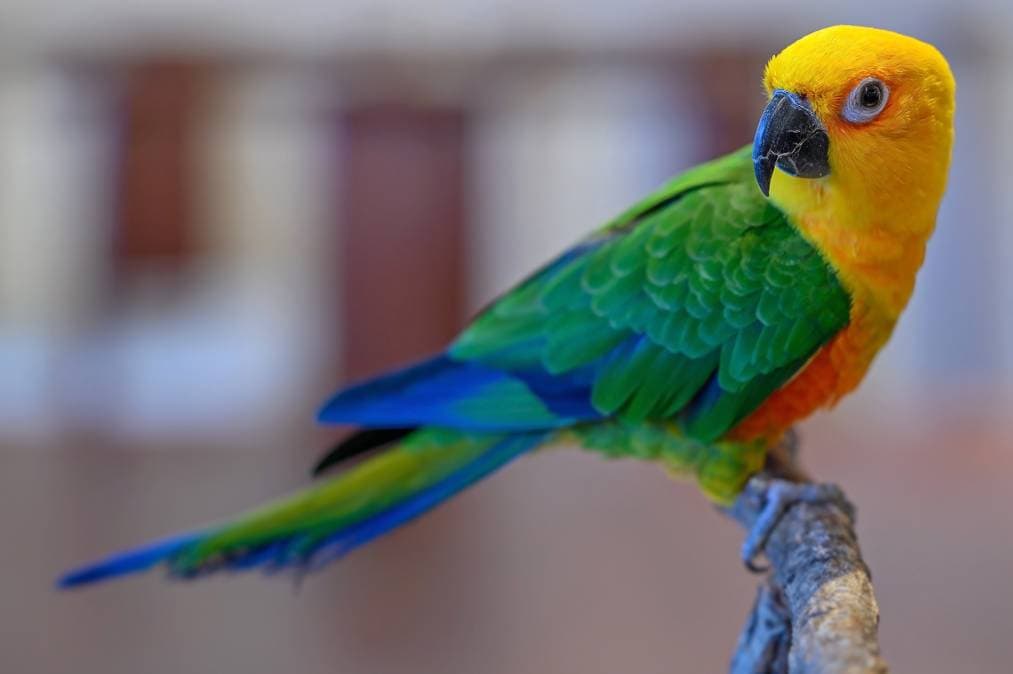
| Size | 12 inches |
| Weight | 4.2 ounces |
| Lifespan | Over 20 years |
The Jenday Conure is a small bird with gorgeous coloring that reaches around 12 inches in length and weighs 4.2 ounces when it’s fully grown. The species lives for over 20 years if it’s cared for properly.
These energetic, smart, loving little parrots do well in a family setting. They make terrific pets for people who have the time to socialize with them. If you’re away from home most of the time, this isn’t the right pet bird for you.
While some Jenday Conures become attached to one person, most tend to love the entire family. They are super cuddly and love to walk around perched on their owners’ shoulders so they can see everything around them.
Fruits, nuts, seeds, veggies, and pellets should keep your Jenday Conure healthy and happy. These are noisy birds, so they are not best for apartments with close neighbors, and there are restrictions for owning Jenday Conures in some states, so make sure you check your laws before purchasing one as a pet.
6. Red-Bellied Parrott
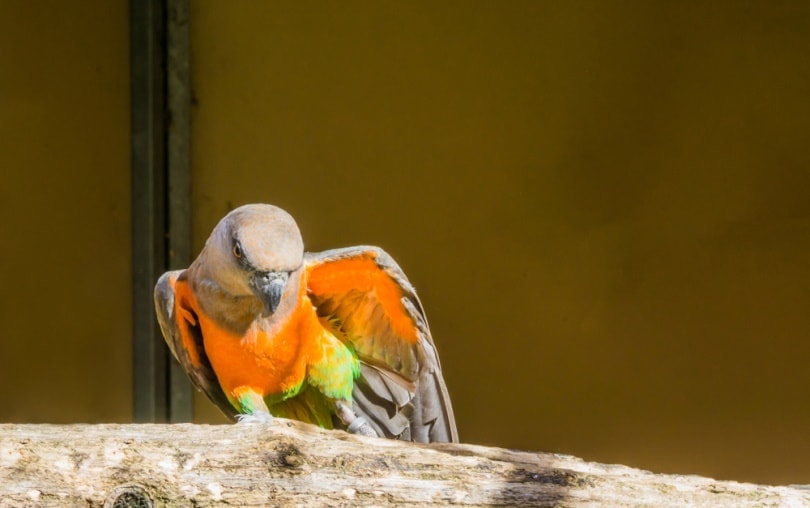
| Size | 7.9 to 8.7 inches |
| Weight | 1.4 to 1.6 ounces |
| Lifespan | Up to 20 years |
The Red-Bellied Parrot is a gorgeous bird that grows 7.9 to 8.7 inches long and weighs between 1.4 and 1.6 ounces. They have an average lifespan of around 20 years, but possibly more if they are properly cared for.
The Red-Bellied Parrot is very active and social, and it needs an owner that can interact with it every day. They are smart, love to climb, and if you are patient and loving with these birds, they will reward you with love and bird songs.
Pellets, fresh fruit, veggies, and seeds are the best food choice for the Red-Bellied Parrot. They require a lot of attention, need quite a bit of exercise, and require that their fruits and veggies be fresh in order to stay healthy.
7. Canary

| Size | 4.5 to 8 inches |
| Weight | Less than one ounce |
| Lifespan | 5 to 15 years |
As one of the most popular species for bird lovers, the Canary is the tiniest pet bird on our list. They come in numerous colors, primarily yellow, and grow to be between 4.5 and 8 inches long. Although yellow is the most prevalent Canary color, you can find orange and red birds. These cute little birds weigh less than one ounce when fully grown and have a life expectancy of between 5 and 15 years.
While the Canaries like to be around people, they don’t like to be handled a lot and are equally happy to have alone time. It’s best not to put two male Canaries in the same cage or aviary since they will fight. A Canary is less likely to sleep if its cage isn’t covered at night, so don’t forget to cover it before going to bed.
The best food for your little Canary is a high-quality seed mixture and pellets. Some greens and fruits should also be given to the bird to keep it healthy and happy.
Conclusion
These are seven of the best red and orange birds you can keep as pets. Most of them are hardy and have few health issues, but you’ll want to find a local avian vet so that you can visit for regular checkups.
Birds are just like any other pet you decide to give a forever home, so make sure you have the time it takes to make the bird happy and keep it healthy and comfortable so that it can be with you for many years to come.
Featured Image Credit: Ally Foster, Shutterstock



